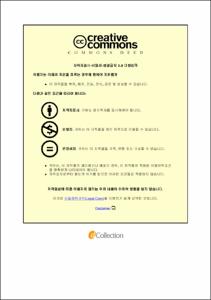Optimization and Quality Evaluation of Gwamegi Processing from Pacific Saury (Cololabis Saira) Using Response Surface Methodology
- Alternative Title
- 반응표면법을 이용한 꽁치의 과메기 제조의 최적화와 품질평가
- Abstract
- Gwamegi is a famous traditional local food in Korea with an increasing consumption. To guarantee sustainable development of Gwamegi with improved quality, taste, and sanitation which satisfy consumer need, Gwamegi was produced from Pacific saury with a weight range of (50-100g) using RSM to maximize the response, and experimental design of 15 experimental treatments was used, the effect of humidity (30%, 40% and 50%), Temperature (14°C, 18°C, and 22°C), and time (24hrs, 36 hrs, and 48hrs) on weight loss (%), moisture content (%), TVBN, TMA, and sensory test was evaluated. Using SAS software program, RSREG procedure was performed. Statistical significance was observed at 95% confidential interval. To interpret the data, Maple 17 software was used to design 3-dimensional graph. The coefficient of regression (R2) and total mean for weight loss, moisture content, TVBN, TMA, fishy smell, Gwamegi smell, smell preference and appearance preference were 0.7422, 0.8104, 0.9360, 0.9495, 0.6983, 0.8385, 0.9636, 0.8181 and 37.30%, 24.21%, 11.29 mg%, 0.39 mg%, 1.85, 1.89, 1.89, 1.98, respectively. Variation for weight loss, moisture content, TVBN, and TMA ranged from 29.79-46.47%,16.8-34.0%,9.8-12.6 mg%, respectively and the score of fishy smell and gwamegi smell were from 1.4 (weak smell) - 2.1(medium smell), preference 1.6(like) – 2.3(neither like nor dislike), and appearance score varied between 1.6 -2.4(medium). Weight loss and moisture response were mostly affected by the order of temperature > humidity > time. TVBN and TMA increase were affected by time > humidity > temperature and humidity > temperature > time, respectively as well as sensory quality where an increase in time and temperature had a negative effect on Gwamegi preference than humidity. The best humidity for the overall evaluated sensory parameter was a humidity 30-45% with low time and temperature. RSM proved to be the effective method for optimizing Gwamegi processing.
- Issued Date
- 2018
- Awarded Date
- 2018.2
- Type
- Dissertation
- Publisher
- 부경대학교
- Affiliation
- 부경대학교 글로벌수산대학원
- Department
- 글로벌수산대학원 국제수산과학협동과정
- Advisor
- 이양봉
- Table Of Contents
- Table of Contents i
List of Figures iv
List of Tables vi
Abstract viii
Introduction 1
Objectives 2
References 3
Chapter 1. Quality evaluation of weight loss and moisture content during Gwamegi processing using response surface methodology 6
Abstract 6
Introduction 7
Materials and Methods 8
Samples Preparation 8
Experimental Design 8
Determination of weight loss 10
Determination of moisture content 10
Statistical Analysis 10
Results and Discussion 11
Weight loss 11
Moisture content 16
Conclusion 20
References 21
Chapter 2. Chemical evaluation of fishy smell during Gwamegi processing using response surface methodology with TVBN and TMA 23
Abstract 23
Introduction 24
Materials and Methods 25
Determination of TVBN 25
Determination of TMA 27
Statistical Analysis 27
Results and Discussion 28
Conclusion 37
References 38
Chapter 3. Sensory evaluation of Gwamegi using response surface methodology 40
Abstract 40
Introduction 41
Materials and Methods 42
Determination of sensory quality 42
Statistical Analysis 43
Results and Discussion 44
Fishy smell 50
Conclusion 59
References 60
Acknowledgement 61
- Degree
- Master
- Appears in Collections:
- 글로벌수산대학원 > 국제수산과학협동과정
- Files in This Item:
-
-
Download
 Optimization and Quality Evaluation of Gwamegi Processing from Pacific Saury (Cololabis Saira) Using.pdf
기타 데이터 / 1.45 MB / Adobe PDF
Optimization and Quality Evaluation of Gwamegi Processing from Pacific Saury (Cololabis Saira) Using.pdf
기타 데이터 / 1.45 MB / Adobe PDF
-
Items in Repository are protected by copyright, with all rights reserved, unless otherwise indicated.